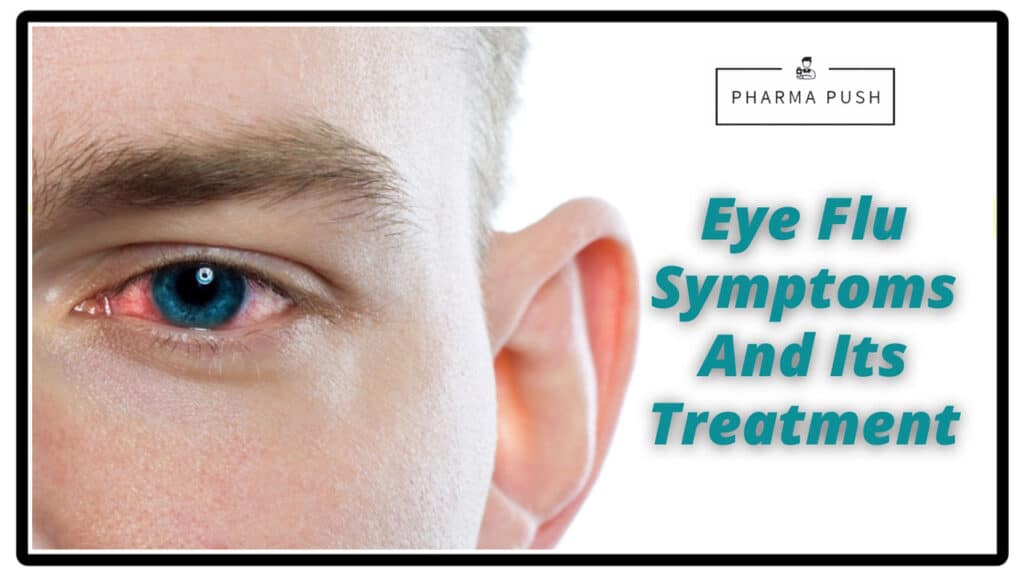Dysmenorrhea is a medical term that refers to painful menstruation or menstrual cramps. It is a common condition experienced by many menstruating individuals, typically occurring just before or during the menstrual period. Dysmenorrhea can range from mild to severe and may be accompanied by other symptoms such as nausea, vomiting, diarrhea, fatigue, and headaches. Primary dysmenorrhea refers to menstrual pain without any underlying medical condition, while secondary dysmenorrhea is associated with conditions like endometriosis, uterine fibroids, or pelvic inflammatory disease.
The First Signs of Dysmenorrhea
The first signs of dysmenorrhea typically involve the onset of menstrual pain or cramps. These may manifest as a dull, throbbing, or cramping sensation in the lower abdomen, often starting shortly before or at the beginning of menstruation. Other common signs and symptoms may include:
- Pain in the lower abdomen or pelvis that may radiate to the lower back or thighs.
- Intensity of pain varying from mild to severe.
- Nausea and vomiting.
- Diarrhea or constipation.
- Headaches.
- Fatigue or weakness.
- Dizziness or fainting spells (in severe cases).
- Emotional changes such as irritability or mood swings.
It’s important to note that the severity and combination of symptoms can vary widely among individuals and may change over time. If you experience persistent or severe menstrual pain, it’s advisable to consult with a healthcare professional for proper evaluation and management.
How many days is dysmenorrhea?
Dysmenorrhea refers to the condition of painful menstruation or menstrual cramps, rather than a specific duration of time. The duration of dysmenorrhea can vary widely among individuals and may depend on factors such as the underlying cause of the pain, overall health, and effectiveness of treatment.
For most individuals, dysmenorrhea typically occurs just before or during menstruation and may last for a few days. In some cases, the pain may persist for the entire duration of the menstrual period, while in others, it may subside after the first day or two.
Primary dysmenorrhea, which occurs without any underlying medical condition, often begins shortly before or at the onset of menstruation and may last for 1 to 3 days.
Secondary dysmenorrhea, which is associated with underlying medical conditions such as endometriosis or uterine fibroids, may result in more prolonged or severe menstrual pain.
It’s important to note that while dysmenorrhea is a common and often manageable condition, severe or persistent menstrual pain should be evaluated by a healthcare professional to rule out underlying medical conditions and determine appropriate treatment options.
What are Causes by Dysmenorrhea
Dysmenorrhea can be caused by various factors, and the underlying cause can influence whether it is classified as primary or secondary dysmenorrhea.
- Primary Dysmenorrhea: This type of dysmenorrhea occurs without any underlying medical condition. It is believed to be primarily due to an overproduction of prostaglandins, hormone-like substances that trigger uterine contractions and inflammation. The exact reason why some individuals produce higher levels of prostaglandins is not fully understood, but it may be influenced by genetic and hormonal factors.
- Secondary Dysmenorrhea: Secondary dysmenorrhea is associated with underlying medical conditions that affect the reproductive organs. Some common causes include:
- Endometriosis: A condition in which the tissue similar to the lining of the uterus grows outside the uterus.
- Uterine fibroids: Noncancerous growths in the uterus that can cause pain and heavy menstrual bleeding.
- Adenomyosis: A condition in which the tissue that lines the uterus begins to grow into the muscular walls of the uterus.
- Pelvic inflammatory disease (PID): An infection of the reproductive organs, usually caused by sexually transmitted bacteria.
- Ovarian cysts: Fluid-filled sacs that develop on the ovaries.
- Cervical stenosis: Narrowing of the cervix, which can impede the flow of menstrual blood and cause pain.
Other factors that can contribute to dysmenorrhea include:
You May Like: What the first sign of PCOS, symptoms and treatment
- Stress and emotional factors
- Lack of physical activity
- Poor diet
- Smoking
- Early onset of menstruation
- Heavy menstrual flow
You May Like: Treatment of Eye flu disease in easy language
It’s important for individuals experiencing dysmenorrhea to consult with a healthcare professional for proper diagnosis and management, especially if the pain is severe or significantly impacts daily activities. Treatment options may include pain relief medications, hormonal therapy, lifestyle changes, or surgical intervention, depending on the underlying cause and individual circumstances.
Pathogenesis of Dysmenorrhea
The pathogenesis of dysmenorrhea, particularly primary dysmenorrhea, involves several interconnected physiological processes, primarily related to the release of prostaglandins and their effects on uterine contractions and inflammation.
- Prostaglandin Release: Primary dysmenorrhea is believed to be primarily caused by an overproduction of prostaglandins, hormone-like substances that are produced in the lining of the uterus (endometrium) during menstruation. Prostaglandins play a crucial role in triggering uterine contractions and promoting inflammation in response to tissue shedding during menstruation.
- Uterine Contractions: Elevated levels of prostaglandins cause the muscles of the uterus (myometrium) to contract more forcefully than usual, leading to increased uterine contractions. These contractions can result in reduced blood flow to the uterine muscles, leading to ischemia (inadequate blood supply) and subsequent pain.
- Inflammatory Response: Prostaglandins also contribute to the inflammatory response within the uterus, leading to the release of inflammatory mediators such as cytokines and leukotrienes. This inflammatory process can further exacerbate pain and discomfort associated with dysmenorrhea.
- Sensitization of Nerve Endings: Prostaglandins and other inflammatory mediators may sensitize nerve endings in the uterus, increasing the perception of pain in response to uterine contractions and tissue inflammation.
- Other Factors: In addition to prostaglandins, other factors may contribute to the pathogenesis of dysmenorrhea, including hormonal imbalances, neurotransmitter abnormalities, and genetic predisposition.
Primary dysmenorrhea is typically not associated with any underlying medical condition, Secondary dysmenorrhea may be caused by conditions such as endometriosis, uterine fibroids, or pelvic inflammatory disease. In secondary dysmenorrhea, the pathogenesis of menstrual pain is often related to the underlying condition causing inflammation or abnormal uterine anatomy.
What is the first treatment for dysmenorrhea?
The first-line treatment for dysmenorrhea typically involves self-care measures and over-the-counter pain relief medications. These may include:
- Nonsteroidal anti-inflammatory drugs (NSAIDs): Medications such as ibuprofen (Advil, Motrin), naproxen (Aleve), or aspirin can help relieve menstrual pain by reducing inflammation and inhibiting the production of prostaglandins, which are responsible for uterine contractions and pain.
- Acetaminophen (Tylenol): This pain reliever can also be effective for alleviating mild to moderate menstrual pain. Unlike NSAIDs, acetaminophen does not have anti-inflammatory effects.
- Heat therapy: Applying heat to the lower abdomen with a heating pad, warm towel, or hot water bottle can help relax the muscles and alleviate menstrual cramps.
- Hydration: Staying hydrated by drinking plenty of water can help reduce bloating and relieve discomfort associated with menstruation.
- Dietary changes: Consuming a balanced diet rich in fruits, vegetables, whole grains, and lean proteins, while limiting caffeine, alcohol, and salty foods, may help alleviate menstrual symptoms.
- Regular exercise: Engaging in regular physical activity can help reduce menstrual pain and improve overall well-being. Exercise promotes the release of endorphins, which are natural pain relievers, and may also help regulate hormone levels.
- Stress management: Practicing relaxation techniques such as deep breathing, meditation, yoga, or mindfulness can help reduce stress and tension, which may exacerbate menstrual pain.
It’s important to note that while these self-care measures and over-the-counter medications can be effective for many individuals with dysmenorrhea, they may not provide sufficient relief for everyone. If menstrual pain is severe or significantly interferes with daily activities, or if it is accompanied by other concerning symptoms, it’s advisable to consult with a healthcare professional for further evaluation and management.
How do you cure dysmenorrhea fast?
While there isn’t a quick “cure” for dysmenorrhea, there are several strategies that may help alleviate menstrual pain relatively quickly. Here are some tips to help manage dysmenorrhea effectively and potentially reduce discomfort fast:
- Over-the-counter pain relief: Nonsteroidal anti-inflammatory drugs (NSAIDs) like ibuprofen (Advil, Motrin) or naproxen (Aleve) can provide rapid relief by reducing inflammation and blocking prostaglandin production. Take the recommended dosage as soon as you start experiencing menstrual pain for the best results.
- Heat therapy: Applying heat to the lower abdomen using a heating pad, warm towel, or hot water bottle can help relax the muscles and provide quick relief from menstrual cramps. Heat increases blood flow to the area, which can alleviate discomfort.
- Hydration: Drinking plenty of water can help reduce bloating and alleviate discomfort associated with menstruation. Staying hydrated is essential for overall health and may help manage menstrual symptoms more effectively.
- Gentle exercise: Engaging in light physical activity such as walking, stretching, or yoga can help relieve menstrual pain by promoting circulation and releasing endorphins, which are natural pain relievers.
- Deep breathing and relaxation techniques: Practicing deep breathing exercises, meditation, or progressive muscle relaxation can help reduce stress and tension, which may exacerbate menstrual pain. These techniques can promote relaxation and provide fast relief.
- Herbal remedies: Some herbal supplements, such as ginger or chamomile tea, may have anti-inflammatory and muscle-relaxing properties that can help alleviate menstrual pain. However, it’s essential to consult with a healthcare professional before using any herbal remedies, especially if you have underlying health conditions or are taking medications.
- Acupuncture or acupressure: These alternative therapies may help relieve menstrual pain by stimulating specific pressure points or energy pathways in the body. Some people find these treatments to be effective for managing dysmenorrhea.
Remember, medication intake warnings may vary depending on the specific medication and individual health factors. Always consult your healthcare provider if you have any questions or concerns about your medications or treatment plan.


